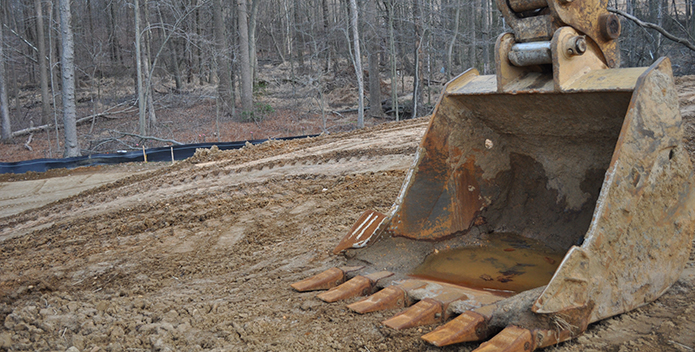The following first appeared in the Maryland Independent.
Charles County taxpayers are spending millions to reduce a type of water pollution that forests filter for free. But woodlands are being cut down in the county. The more forests the county loses, the more money residents might have to pay.
That's just the monetary damage. There's also residents' health to consider, lost wildlife habitat, and the intangible loss to our spirits when forests are bulldozed for shopping centers, subdivisions, and other projects.
This is not rhetoric. It's math.
Forests are one of our best defenses against polluted runoff. That's rain that washes off the landscape and into nearby creeks. Forests soak up and filter out pollutants from the runoff. They are giant sponges. A scientist with the Maryland Department of Natural Resources (DNR) last year estimated that forests in Charles County provide $371 million worth of runoff cleaning services per year.
But nearly 190 acres of forest are lost to development each year in the county, according to county reports. Those same acres would filter millions of gallons of polluted runoff in a summer storm.
It gets worse. Pave a forest and you not only eliminate the giant green sponge, you create a hard funnel for weed killer, petroleum products, and other contaminants to flush into nearby creeks and rivers. The volume and speed of the flush erodes creek banks, floods downstream areas, and causes other problems. Runoff controls installed during development can't fully replace a forest, and are often overwhelmed in a heavy storm.
The more forests are paved the more taxpayers are asked to fund man-made clean-up projects that forests used to do for free. The county estimates it will spend about $73 million in a five-year period to reduce polluted runoff from a fraction of existing development, according to its Financial Assurance Plan. DNR notes on its website that forest destruction in the Washington, D.C. -Baltimore area since the early 1970s has produced a 19 percent increase in polluted runoff at a cost of over $1 billion.
Reducing polluted runoff is only one benefit of a forest. Woodlands also produce oxygen, help recharge groundwater, sequester carbon (which eases climate change), and provide a home to animals, among other benefits. The report last year by DNR concluded that the value of all these services from Charles County's forests and wetlands is $577 million per year.
A bill in the Maryland General Assembly would help save the county's most valuable forests, and also likely save money in the process. SB 610/HB 766 would update the state's Forest Conservation Act (FCA).
The bill does not attempt to stop development. It better protects our best forests, the ones that will provide us the most services. In many cases developers can work around those forests by simply grading smarter, not clear-cutting a tract because it's easier and less expensive. We have seen projects where developers clear and grade carefully, and still are able to build viable projects. It can be done.
The FCA was enacted in 1991 to protect forests from development pressure to the maximum degree possible. In the years since, the FCA has done significant good. But numerous blue-ribbon commissions and reports have also found it flawed. The most recent study by the UMD College of Agriculture & Natural Resources concluded the FCA has slowed the loss of some forests, but actually enabled the clearing of “priority” forests that benefit us the most.
A few precise changes in the FCA can make all the difference: better define what constitutes a “priority” forest that should be most protected; better clarify justification for clearing priority forests; and require one acre of replanting for each acre of priority forest whose clearance can't be avoided, to name a few improvements. The legislation does that.
Years ago, The Lorax spoke up for the trees in Dr. Seuss's children's book of the same name. In the last nine years alone Charles County has lost more than 1,700 acres of forests to development. Let's listen to the Lorax. And to fiscal conservativism. Let's improve the FCA.
Take action now and tell your state legislators how valuable forests are to our environment, economy, and way of life. Tell them we need more forests and ask them to support House Bill 766 and Senate Bill 610.

Issues in this Post
Forest Loss Community Conservation Forest Loss Land Use Politics CBF in Maryland



